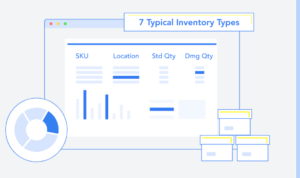Supply chain visibility refers to an enterprise’s ability to understand and monitor activities and events occurring within the entire supply chain network. This capability includes monitoring internal operations as well as tracking activities of external partners such as suppliers and carriers. Through supply chain visibility systems, businesses can obtain critical information in real-time, identify potential issues, and make adjustments promptly to enhance operational efficiency and flexibility.

Ensure seamless integration among various information systems (e.g., warehouse management systems, logistics management systems, ERP systems).
Achieve interoperability and integration of data across different systems to ensure smooth information flow and eliminate data silos.
Deploy sensor technology and automatic identification technologies (such as RFID and barcodes) to enable real-time monitoring of goods’ location, status, and transport processes.
Utilize these technologies to improve data collection accuracy and efficiency, enhancing monitoring of warehouse operations.
Use data analysis tools and big data technologies to process and analyze data collected in real-time, extracting valuable insights.
Utilize visualization methods to convert data into easily understandable charts and reports, facilitating rapid comprehension of the supply chain status by managers.
Implement real-time monitoring systems to track the location, movement trajectory, and storage conditions of goods within warehouses, ensuring safe and efficient management.
Monitor the operational status of equipment and energy consumption, promptly identifying issues and taking measures to ensure normal production processes.
Establish close connections with external partners such as suppliers, carriers, and retailers to share data and information.
Facilitate collaborative operations across different supply chain segments, improving response speed and flexibility to cope with market changes and fluctuations in customer demands.
Establish secure data transmission and storage mechanisms to ensure data security and privacy protection within the supply chain.
Comply with relevant regulations and standards to safeguard data security and prevent information leakage and malicious tampering.
Accurate Inventory Management: Real-time monitoring of inventory levels to avoid overstocking or stockouts, increase inventory turnover rates, and reduce capital holding costs.
Quick Decision-Making and Response: Accurate comprehension of dynamic information within the supply chain enables prompt decision-making and timely responses to market fluctuations and unexpected occurrences, thereby effectively mitigating risks.
Enhanced Customer Satisfaction: Tracking order statuses and goods locations to ensure timely deliveries, improving customer satisfaction and loyalty.
Optimized Supply Chain Processes: Sharing information and data to enhance supply chain collaboration improves production planning, logistics arrangements, and inventory control, increasing overall efficiency.
Cost Reduction and Efficiency Improvement: By achieving supply chain visibility, companies can decrease operational costs, optimize resource utilization, enhance efficiency, and reduce production costs.
Strengthened Partner Relationships: By facilitating information sharing and transparency among supply chain partners, closer collaboration is nurtured, leading to increased efficiency of cooperation and elevated levels of trust.
Risk Management and Warning Mechanisms: Timely detection of potential issues and actions to mitigate risks, establishing effective warning mechanisms to ensure stable supply chain operations.
Data-Driven Decision-Making: Making decisions based on real-time monitoring data and analytical results to drive business development strategies and enhance overall operational performance.
Enhanced Brand Reputation: Ensuring timely and reliable product deliveries to improve customer satisfaction, which helps establish a positive brand image for the company.
Improved Response Time: Real-time monitoring of the supply chain situation to swiftly identify and resolve issues, shorten response times, and enhance business agility.
In conclusion, supply chain visibility not only aids in improving operational efficiency and cost reduction but also enhances a company’s competitiveness, promotes the development of partner relationships, and fundamentally elevates the operational level of the entire supply chain system. By achieving supply chain visibility, companies can better adapt to market changes, meet customer needs, and achieve sustainable development and success.

Last updated: 2025-04-01

Last updated: 2025-03-03

Last updated: 2025-02-05

Last updated: 2025-01-02